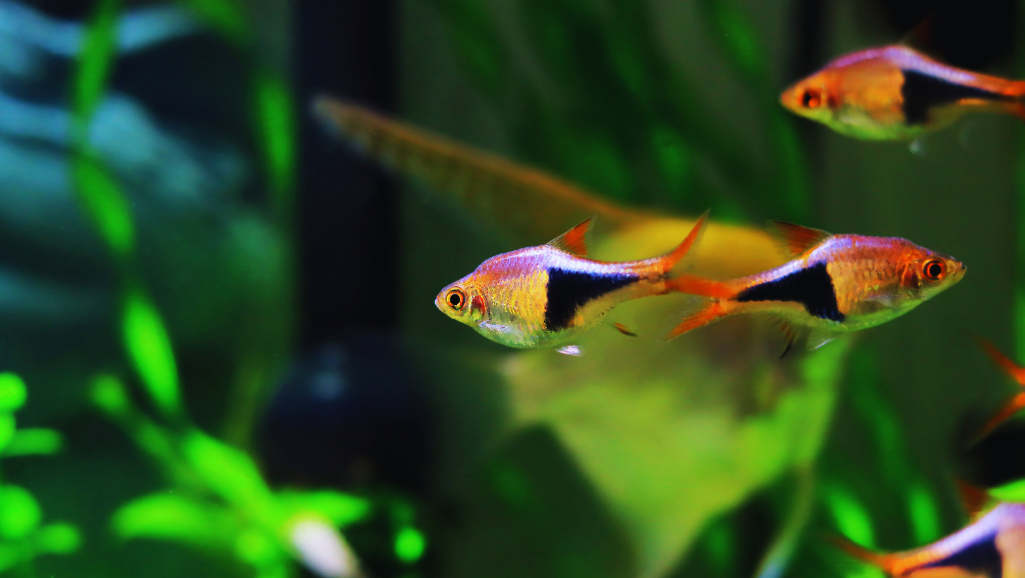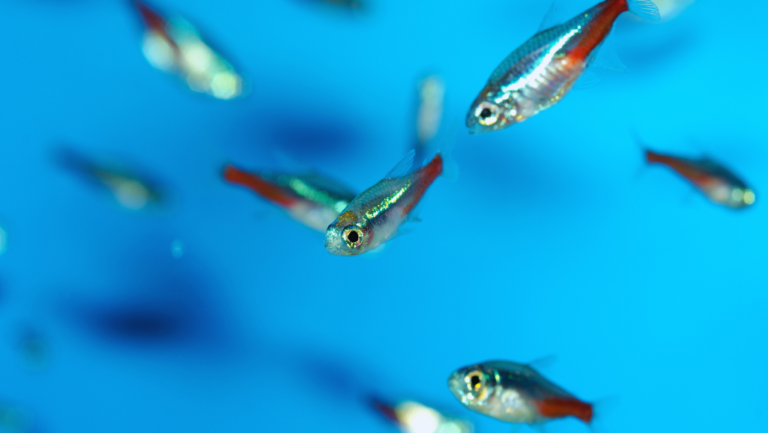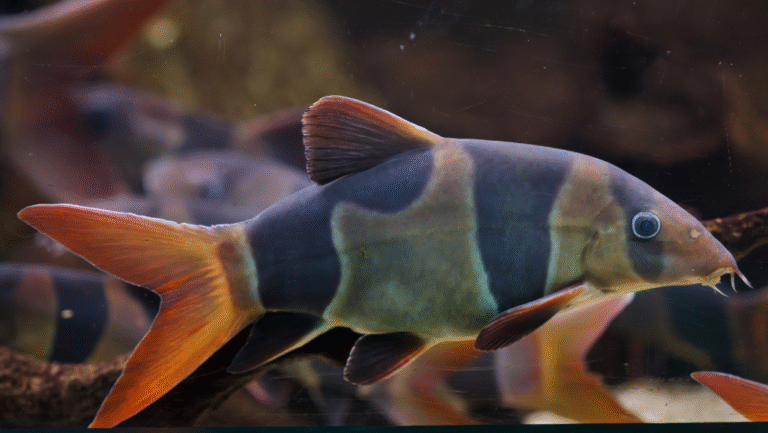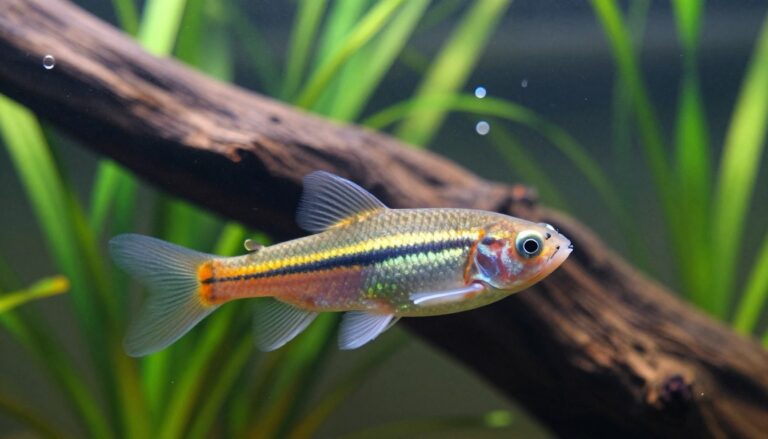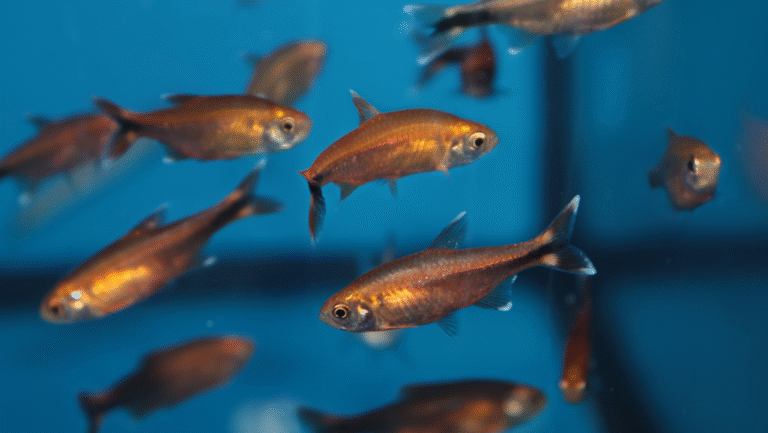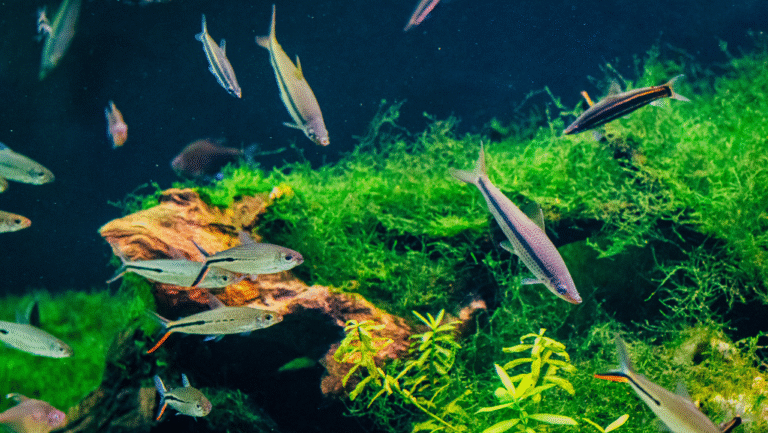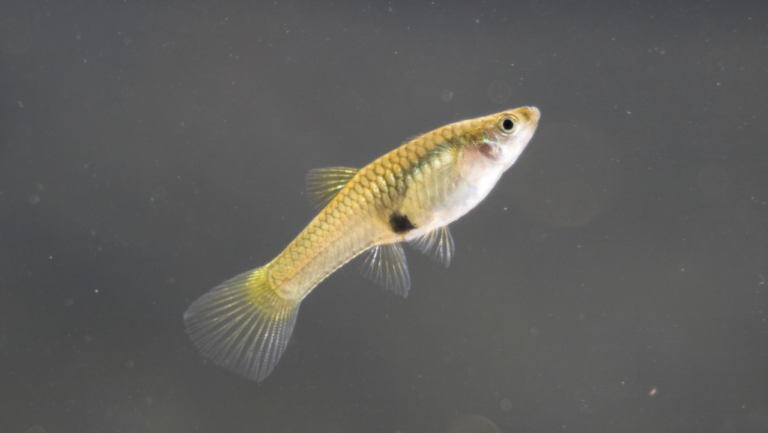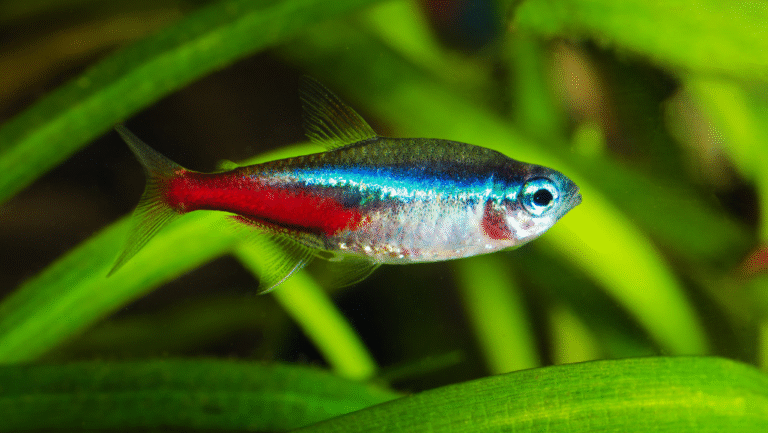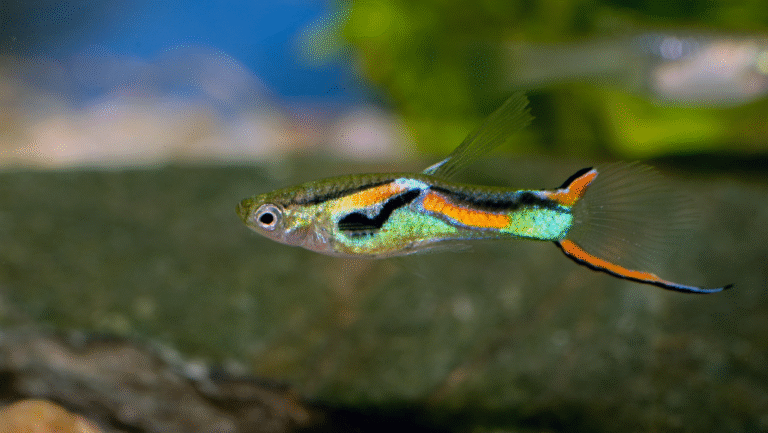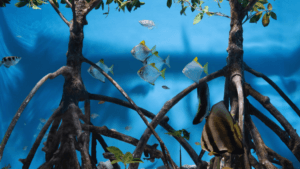For both new and experienced aquarium lovers, a tank full of colorful aquarium fish is more than decoration — it’s a living centerpiece. Bright, healthy fish add visual interest and reflect careful husbandry: the right mix of species, water chemistry, and maintenance makes an aquarium thrive.
Whether you keep a planted freshwater aquarium or a saltwater display, the wide range of colorful fish available means you can build everything from a peaceful community tank to a bold species-focused showcase. To help you choose, a list of the most colorful fish is ready — each entry below includes quick care notes so you can match color, behavior, and tank requirements.
Key TakeawaysPick colorful fish that match your tank type: freshwater or saltwater, planted or minimalist.
Vibrant fish indicate good care — proper water, diet, and space are essential.
Learn species basics (size, temperament, water needs) to build a harmonious community or species tank.
Read the species care sections below for practical tips and stocking ideas — then plan your tank around water parameters and compatible tank mates.Understanding the Appeal of a Colorful Aquarium
A vibrant aquarium can transform a room into a living piece of art. Beyond looks, a well-planned display brings calm and focus — a visual retreat that fits any home or office. Whether you’re building a planted freshwater aquarium or a minimalist community tank, thoughtful design makes the difference.
Setting up a tank requires planning: choose a cohesive palette, place aquatic plants and hardscape for depth, and arrange fish so colors and behaviors complement one another. For example, a deep blue background makes orange or red fish pop, while a lighter substrate highlights subtle pastel colors.
Think of your aquascape like interior design. Color choices, lighting, and plant placement shape how your fish stand out — and how the tank fits the room. Make sure your layout also meets your fish’s needs for hiding spots, swim space, and compatible water conditions.
The Role of Color in Aquatic Presentation
Color theory helps when you plan a display: complementary colors (blue vs. orange) create striking contrast, while analogous schemes (blues and greens) deliver a calm, natural feel. Use aquatic plants like Java fern, Anubias, or Vallisneria to add texture and color contrast; driftwood and rock can provide warm neutrals to balance bright fish.
Lighting is also key — full-spectrum or plant-friendly LEDs will enhance both plant growth and fish colors. Aim for a balance that shows off hues without stressing your fish.
How Vibrant Tanks Improve Well-being
Watching an aesthetic tank setup can help reduce stress and promote relaxation for many hobbyists. While individual results vary, the combination of movement, color, and natural elements often creates a soothing focal point. If mental well-being is a goal, design for gentle water flow, soft lighting, and a peaceful community of colorful fish.
In short, blending art and aquarium science — the right fish, plants, lighting, and aquascape — results in a display that’s beautiful and livable. See the species sections below for placement tips and tank-specific advice to build a healthy, colorful aquarium.
Guppy: A Rainbow of Varieties for Your TankGuppies (Poecilia reticulata) are one of the best-known freshwater fish species for home aquariums. Their bright, varied colors and flowing tails make them a favorite for both beginners and experienced hobbyists. Guppies are hardy, adaptable, and social — excellent choices for a peaceful community tank when paired with compatible species.
Adults typically reach about 1.5–2 inches, so they don’t need huge tanks, but they do appreciate swimming space and stable water. They are livebearers and breed readily, so plan for population control and strong filtration if you add them to your freshwater aquarium.
Quick care at-a-glanceFeatureDetailsMinimum Tank Size
5 gallons for a trio (larger tanks reduce aggression and breeding pressure)Temperature for Optimal Health
76–78°F (typical adult health; lifespan ~2–3 years under good care)
82°F can speed reproduction (may shorten average lifespan); cooler temps (~72°F) may slow reproduction and slightly extend lifespanFeeding Requirements
Adults: 1–2 times daily with high-quality flake or pellet food; supplement with frozen brine shrimp or daphnia a few times weekly. Fry: 3–5 small feedings daily.Pricing
Standard strains: around $2–$5; specialty or show strains: can be much higher.Guppies can reproduce frequently (often every few weeks under ideal conditions), so managing fry is important. Use a breeding box, a separate grow-out tank, or keep more females than males to reduce male harassment. Strong biological filtration and regular water changes help keep a guppy tank healthy and colorful.Males are slimmer and showier; they have a modified anal fin called a gonopodium used for mating.
Females are rounder and larger-bodied and may carry fry internally for 21–30 days before giving birth.Because heavy selective breeding for color can increase susceptibility to some health problems, prioritize water quality and a varied diet. Feeding occasional meaty foods like frozen brine shrimp, daphnia, or finely chopped bloodworms will boost color and condition.Tip: Quarantine new guppies for at least 7–10 days and monitor water parameters closely — this prevents disease and gives you time to observe temperament and compatibility.Guppies are a joyful, colorful addition to many tank types. Match their needs to your aquarium size and community — and enjoy how these little swimmers make your tank come alive.
Cardinal Tetra: Elegance in Aquatic Blue and Red
The tropical aquarium fish Cardinal Tetra brings a striking ribbon of red and blue to any freshwater aquarium. These peaceful, schooling fish are prized for their vivid colors and graceful movement, making them a favorite for planted community tanks and species-focused displays alike.
Cardinal Tetras (Paracheirodon axelrodi) are native to blackwater tributaries of the Amazon basin and do best in soft, slightly acidic to neutral water that mimics their natural habitat. Aim for stable temperatures around 75–82°F (24–28°C) and softer water to help keep their colors rich and behavior natural. Note: local wild populations can tolerate slightly different pH ranges, so target consistency and gradual changes rather than extreme values.CharacteristicDetailMax Size
~1.5 inches (3.8 cm)Coloration
Bright red stripe with iridescent blue bodyDiet
Omnivore — high-quality flakes, micro pellets; supplement with frozen brine shrimp, daphnia, and finely crushed frozen foodsSchool Size
6–10 as a minimum; larger schools (12+) show natural schooling and reduce stressWater Preferences
Soft, slightly acidic to neutral water; stable temp 75–82°F (24–28°C)Habitat
Amazon River Basin (blackwater tributaries)Care Level
Intermediate — needs stable water and good water qualityCompatibility and Tank Setup
Cardinals are shy and thrive in densely planted tanks with subdued lighting and plenty of mid- to upper-level swimming space. Suitable community fish include peaceful tetras, rasboras, and small catfish like Corydoras. Avoid large or aggressive tank mates that will stress or outcompete them for food.
Feed a varied diet to maintain bright colors — a staple flake or micro pellet supplemented several times weekly with frozen brine shrimp or daphnia will boost red and blue pigmentation. Use gentle filtration and frequent small water changes to keep water quality high; cardinals respond poorly to abrupt parameter swings.
With the right tank mates, plants, and consistent care, Cardinal Tetras transform a freshwater aquarium into a calm, colorful centerpiece that highlights the beauty of schooling fish.
Embracing the Majesty of Discus in Freshwater Settings
Discus (Symphysodon spp.) are among the most striking freshwater fish species you can keep. Known for their round bodies, vivid color varieties, and subtle social behaviors, discus make a breathtaking centerpiece in a well-maintained aquarium. Their beauty comes with precise care requirements, so plan your tank around stable water, consistent maintenance, and peaceful tank mates.
Discus Care Tips for a Healthy Vibrant Showcase
Water quality and temperature are critical to discus health and coloration. Aim for steady temperatures in the low-to-mid 80s°F (commonly 82–86°F), and prioritize consistent parameters over dramatic swings. Many hobbyists keep discus slightly warmer than typical community fish to support metabolism and color development.
Target a slightly acidic to neutral pH (roughly 6.0–7.0 is commonly recommended for many discus strains) and soft to moderately soft water; the exact ideal varies with origin and strain, so research the line you keep. A large tank helps buffer parameter changes, so a minimum of 75 gallons for a small group is a good rule of thumb.
For vibrant, stress-free discus, stock at least six individuals. A proper group reduces aggression and helps fish establish natural social dynamics, which shows in better color and behavior.
Creating the Right Environment for Discus
Design the tank to mimic slow-moving Amazonian waters: smooth sand or fine gravel substrate, scattered driftwood, and tall background plants like Amazon sword or Vallisneria for vertical structure. Use soft lighting and provide open mid-water swimming space along with planted areas for shelter.
Reliable equipment matters: choose a well-sized heater with redundancy (or a quality heater and thermostat) and a gentle but efficient filtration system — canister filters or well-plumbed wet/dry setups are common. Maintain a strict water-change routine (many discus keepers do weekly 25–50% changes depending on stocking and bio-load) to keep nitrates low and water chemistry stable.ParameterRequirementOptimal Temperature
82–86°F (28–30°C)Minimum Tank Size
75 gallons (for a small group)Ideal Group Size
At least 6pH Range
~6.0–7.0 (target stability)Suitable Tank Mates
Peaceful species that prefer warmer water: Cardinal Tetras, Corydoras, some small peaceful rasborasFood and conditioning influence color and body condition. Feed a varied diet with high-quality discus pellets or flakes, supplemented with frozen meaty foods (brine shrimp, bloodworms) and occasional live or frozen treats to encourage natural feeding and enhance color. Monitor feeding closely — discus can be picky and do best with consistent routines.
In summary, discus are a rewarding but advanced choice for freshwater hobbyists. They reward careful planning and daily observant care with exceptional colors and graceful behavior. Follow a discus-specific care checklist (tank size, stable warm water, gentle filtration, regular water changes, and compatible community fish) to create a healthy, vibrant showcase in your home.
Awesome Aquarium Fish: German Blue RamIf you want a small, vividly colored centerpiece for a tropical aquarium, the German Blue Ram (Mikrogeophagus ramirezi) is a top choice. These charming cichlids bring iridescent blues and warm golds to a tank, adding life and color without needing huge space — but they do require stable water and good care.
Quick careFeatureDetailsAdult Size
About 2–2.5 inchesMinimum Tank Size
20 gallons for a small group or pair; larger tanks are better for community setupsTemperature
78–85°F (ideal stability; avoid rapid swings)Water & Hardness
Soft to moderately soft water; low to moderate GH and low KH preferredCare Level
Intermediate — needs stable water, clean conditions, and peaceful tank matesGerman Blue Rams do best in warm, stable water with gentle filtration and frequent, small water changes to maintain low nitrate levels. Use smooth substrate, some cave-style hiding spots, and fine-leaved plants to create sheltered territories without blocking open swimming areas.
Pair them with peaceful community fish that share similar temperature preferences — small tetras, peaceful rasboras, and Sterbai Corydoras are common companions. Avoid large or aggressive tank mates that will outcompete or harass the rams.
For breeding, keep water slightly acidic and soft (many breeders use a pH around 6.2–6.8) and provide a separate, well-monitored breeding tank of modest size (often 10–20 gallons) to protect fry and control conditions. Proper diet — high-quality cichlid pellets supplemented with frozen brine shrimp or bloodworms — supports color and conditioning.
The German Blue Ram is a rewarding species for aquarists who can commit to steady maintenance and careful water management. In the right tank, they add unique color and personality to a vibrant freshwater community.
The Unforgettable Display of Betta SplendensBetta splendens are among the most iconic and colorful freshwater fish. Known for dramatic tail shapes, iridescent body colors, and curious personalities, bettas can be a stunning focal point in a fish tank when given the right setup and care. They’re popular with hobbyists who appreciate both showy color and interesting behavior.
Most common bettas are bubble‑nest builders (the male creates and guards a nest at the water surface). A single female can lay many eggs (reports often cite several hundred in a full spawn), but note that not all eggs will survive and breeding requires careful planning and experience. A handful of Betta species (other Betta relatives) display mouthbrooding behavior — these are different taxa and have distinct care needs.Egg CharacteristicsSizeColorHatching TimeStandard Betta Eggs (bubble‑nest)
~1 mm
White or pale yellow
~2–4 days (development signs vary with temperature)Mouthbrooding Betta Eggs (other Betta spp.)
2–3 mm
Similar pale tones but larger
Carried by parent until release (species dependent)Male bettas are territorial and often aggressive toward other males; avoid housing males together. Female bettas can be kept in sororities (carefully introduced groups) if space, hiding spots, and monitoring are provided. Always provide access to the surface — bettas are labyrinth breathers and need to gulp air at the top.
Betta Tank Setup & Care Basics
Start with at least a 5‑gallon tank per betta to provide stable water conditions and room to explore. Use a tight‑fitting lid (bettas can jump) and a gentle filter to maintain water quality without creating strong currents. Ideal water temperature is generally 76–82°F (24–28°C) and a slightly acidic to neutral pH suits most captive bettas; consistency matters more than perfect numbers.
Diet strongly affects color and body condition. Feed a high‑quality betta pellet as a staple and rotate in frozen or live meaty foods like brine shrimp and bloodworms a few times per week to boost vibrancy and health. Feed small portions 1–2 times daily and remove uneaten food to prevent water issues.Do not house two male bettas together — severe fighting can occur.
Use live plants or silk décor for cover and reduced stress.
Quarantine new fish and introduce tankmates slowly; compatible companions include peaceful bottom‑ or mid‑level species that won’t nip fins.With the right tank, diet, and attention to behavior, betta splendens can be a rewarding, colorful centerpiece in your freshwater aquarium, showing off dramatic tails and engaging personalities.
Boeseman’s Rainbowfish: A Dazzling Speedster
Boesemani rainbowfish (Melanotaenia boesemani) are beloved for their split-tone flash — vibrant blue fronts that fade into warm orange or yellow tails. These colorful freshwater fish make an energetic, eye-catching addition to community tanks and are especially striking in well-lit planted setups.
Rainbowfish care centers on space and stability: they are active schooling fish that need room to cruise and a stable environment to show their best colors. Aim for a long tank (4 feet or longer is a practical guideline) with ample horizontal swimming area; a minimum volume of ~30–40 gallons is reasonable for small groups, but larger is better.
Choosing Tank Mates for Rainbowfish
Pick lively, peaceful companions that occupy different levels of the tank. Good tank mates include swordtails, platies, danios (like zebra danios), and other peaceful mid‑to‑upper level swimmers. Avoid slow, long‑finned species that rainbowfish might outcompete at feeding time.
Maintaining a Colorful Community with Rainbowfish
Keep rainbowfish in groups of at least 6–8 to encourage natural schooling behavior and reduce stress. Feed a varied diet: high‑quality flakes or micro pellets as a staple, supplemented several times weekly with frozen or live foods such as brine shrimp and daphnia to boost color and condition. Regular water changes and reliable filtration will help maintain stable water parameters and vibrant fish.
Golden Wonder Killifish: A Hardy Choice for Vibrant TanksGolden Wonder Killifish are energetic, golden‑hued freshwater fish that bring motion and color to community tanks. They’re admired for hardiness relative to other killifish and for their warm yellow‑gold tones that contrast nicely with green plants and darker substrates.
These freshwater fish are adaptable but do best when their water, temperature, and diet are kept consistent. A minimum tank of about 10 gallons suits a small group or pair, though larger systems make for a more stable environment and room for lively behavior.ParameterGolden Wonder Killifish RequirementsGeneral Tank ConditionsTemperature
72–82°F (22–28°C)
72–78°F (22–26°C)pH Level
6.0–7.0 (slightly acidic to neutral)
6.5–7.5Hardness (dGH)
5–10° dGH
5–15° dGHMinimum Tank Size
10 gallons (larger preferred for groups)
Varies by speciesLifespan
Up to ~3 years with good care
Depends on speciesBehavior, Diet, and Tankmates
Golden Wonder Killifish are active mid‑level swimmers and generally peaceful, but like many killifish they can show territorial displays during spawning. Feed a varied diet to maintain color and condition: high‑quality flakes or micro pellets as a staple, supplemented regularly with frozen brine shrimp, daphnia, or finely chopped meaty foods.
Choose peaceful, active tankmates that occupy different niches — small tetras, danios, and non‑aggressive Corydoras make good companions. (Note: Cardinal Tetras are much smaller than 3 inches — they’re roughly 1.5 inches when fully grown, so verify companion sizes when planning a community.)
For breeding, keep a separate, lightly planted tank with aged water and gentle conditions. Many killifish eggs benefit from calm water and stable parameters; provide appropriate live or frozen foods (brine shrimp for conditioning) to encourage spawning and healthy fry.
All in all, Golden Wonder Killifish are an excellent choice for aquarists seeking colorful, hardy freshwater fish that add energy to planted or community tanks. With the right diet, stable water, and compatible companions, they offer reliable color and lively behavior for both new and experienced keepers.
Cherry Barb: A Peaceful Addition to Any Communal Setup
The Cherry Barb, commonly listed as Puntius titteya (sometimes placed in Pethia), is a small, colorful freshwater fish prized for peaceful behavior and striking male coloration. These community-friendly fish are a favorite for hobbyists building planted tanks or beginner setups because they are hardy and visually appealing.
Quick tips for beginners
Cherry Barbs do well in slightly acidic to neutral water and benefit from being kept in small groups to show natural schooling behavior and reduce stress. A 10–20 gallon tank is a comfortable home for a small school, and adding live plants gives them cover and makes their colors pop.Diet: small pellets, daphnia, and spirulina flakes; supplement occasionally with frozen brine shrimp or micro‑foods to boost color and condition.
Tank size: 10–20 gallons works well for a group of 6–8 individuals.Males develop a deep cherry-red hue during breeding or when well conditioned; females are generally paler with a tannish-red tone. Cherry Barbs can breed in home tanks under the right conditions, producing eggs among plants and fine-leaved cover.CharacteristicDetailsTemperament
PeacefulSize
Up to ~2 inches (5 cm)Tank Size
10–20 gallons (for small schools)Diet
Small pellets, daphnia, spirulina flakes; occasional frozen foodsColoration
Males: deep cherry; Females: lighter tannish-redWater Conditions
Slightly acidic to neutral pH; stable temperature ~72–78°FFor community tanks, pair Cherry Barbs with other peaceful mid‑level species such as small rasboras, peaceful tetras, and Corydoras catfish. They thrive in planted aquariums where plants provide hiding spots and reduce stress, helping both color and behavior to shine.
If you’re starting your aquarium journey, Cherry Barbs are a reliable, colorful choice — forgiving of minor beginner mistakes but rewarded by vibrant males and engaging group behavior.
Jewel Cichlid: Adding a Dash of African BeautyThe term “Jewel Cichlid” commonly refers to bright, colorful members of the Hemichromis group — small West African cichlids prized for blue‑green and gold iridescence. They add striking color to an aquarium but come with behavioral and setup considerations that make them best for aquarists who understand cichlid needs.
Handling the Aggression of Jewel Cichlids
Jewel Cichlids can be territorial and aggressive, especially during breeding or in cramped tanks. Signs of stress or aggression include fin nipping, chasing, and hiding. To reduce conflict, give them plenty of space, defined territories, and visual barriers (rocks, caves, and driftwood).Provide multiple hiding spots and caves to break lines of sight.
Keep stocking densities moderate — overcrowding increases aggression.
Avoid housing them with slow, docile, or very large species that they’ll harass or that may injure them in return.Tank Requirements for Healthy Jewel Cichlids
Set up a tank that suits their territorial nature: a minimum of 40 gallons is recommended for a pair or small group, with larger systems preferred for mixed groups. Use a rocky aquascape with open swimming areas and caves so fish can claim and retreat to territories.
Water quality must be excellent — aim for zero ammonia/nitrite and low nitrates with regular water changes. Jewel Cichlids tolerate a range of temperatures, but many keepers keep them around 79–82°F during conditioning and breeding. Moderate hardness and near‑neutral pH are generally acceptable, but check the needs of the specific Hemichromis strain you own.RequirementRecommendationMinimum Tank Size
40+ gallonsTemperature
79–82°F for conditioning/breedingWater Quality
Zero ammonia/nitrite; low nitrate; regular changesDecor
Rocks, caves, and sturdy décor for territoriesDiet and Breeding Tips
Jewel Cichlids are carnivorous and thrive on protein‑rich diets. Feed quality pellets formulated for carnivores, and supplement with frozen or live meaty foods like brine shrimp and bloodworms to support color and breeding condition. For breeding, provide a separate tank if possible — it reduces stress on fry and lets you control water and diet more precisely.
Quarantine new fish and monitor behavior closely when introducing tankmates. With the right planning — appropriate tank size, strong filtration, plenty of cover, and a protein-rich diet — Jewel Cichlids reward keepers with vivid color and lively behavior, bringing a distinctive African beauty to the aquarium.
Electric Blue Acara: Strikingly Brilliant Aquatic Life
Despite the name’s hint at saltwater brilliance, the Electric Blue Acara (Andinoacara pulcher) is a freshwater cichlid prized for an intense electric‑blue sheen that stands out in planted and community tanks. Their bold color makes them a favorite for aquarists who want a striking centerpiece without moving to a marine setup.
These cichlids are generally peaceful for their size but can be semi‑territorial, especially during breeding. They respond well to steady care: high‑quality cichlid pellets as a staple, rotated with frozen or live meaty foods such as brine shrimp and bloodworms to enhance color and condition.
Tank & setup essentials
Electric Blue Acaras grow to roughly 6–8 inches, so plan a roomy aquarium — a 50‑gallon tank or larger is advised to provide swim space and reduce plant uprooting. Use sturdy, rooted plants (Anubias, Java fern) or robust artificial plants, and include rockwork and hiding spots to break lines of sight and reduce territorial conflicts.
Maintain stable water between about 72–82°F (22–28°C) and use a reliable filter with moderate flow. A moderately decorated aquascape with open swimming areas and secure planting helps these fish feel comfortable and reduces stress-related color loss.
Feeding & compatibility
Feed twice daily in amounts they can consume in a few minutes: a base of quality cichlid pellets, plus regular servings of frozen brine shrimp, bloodworms, or other meaty foods to support vibrant color and growth. Monitor feeding to avoid overfeeding and water-quality issues.
Electric Blue Acaras make good community members with similarly sized, non‑aggressive fish. Avoid tiny slow-moving species that may be outcompeted at feeding time and be cautious pairing them with very aggressive large cichlids.
With the right tank size, stable water, and a protein-rich diet, Electric Blue Acaras offer dramatic electric blue color and calm presence — a visually rewarding choice for intermediate hobbyists building vibrant freshwater aquariums.
Conclusion
We’ve toured a wide selection of colorful aquarium fish and practical care tips to help you build a vibrant tank. Whether you favor a planted freshwater aquarium or a bold species-focused display, species like guppies, cardinal tetras, discus, and Electric Blue Acaras show how color and behavior combine to make any fish tank memorable.
Good care is the foundation of color and health. Make sure you match each species to appropriate water, temperature, and tank size requirements, and follow a regular maintenance routine (water testing, weekly partial changes, and filter upkeep). For community tanks, plan compatible mixes so every fish can eat, hide, and thrive.
If you’re starting out, choose hardy freshwater fish such as guppies, platies, or small peaceful tetras and begin with a stable 10–30 gallon setup depending on the species. Use this article’s species sections as care sheets — note size, temperament, diet, and ideal water parameters before stocking. With steady attention to water quality and thoughtful stocking, your aquarium will reward you for years.
Ready to start? Pick one species to master first, set up the right tank and equipment, and expand to a community tank once parameters are stable. Happy fish keeping — the hobby brings color, calm, and a lively connection to the underwater world.FAQWhat makes a colorful aquarium fish ideal for my tank?
Quick answer:Suitable size for your tank (match adult size to available space).
Compatible temperament with existing community fish.
Water-parameter compatibility (temperature, pH, hardness).
Reasonable diet and care requirements you can meet consistently.Colorful fish add visual interest, but make sure their needs fit your tank before buying.
How do I set up a tropical fish tank for maximal vibrancy?
Quick tips:Choose either a planted freshwater aquarium or a saltwater setup — don’t mix types.
Use full‑spectrum LEDs to enhance color without stressing fish.
Pick substrates and backgrounds that contrast with your fish (e.g., dark background for neon/red fish).
Provide stable filtration, a heater, and a regular water‑change schedule.See species sections above for specific placement and lighting suggestions.
What are some of the best fish for beginners to add color to their tanks?
Good starter choices:Guppies — colorful, small, and hardy.
Cherry Barbs — peaceful and striking when males color up.
Platies and swordtails — colorful livebearers with simple diets.These freshwater fish work well in community tanks when you match tank size and water conditions.
What are the key aquarium fish care tips for maintaining vibrant colors?
Actionable checklist:Feed a varied, high‑quality diet — include frozen brine shrimp or bloodworms for color and condition.
Keep water clean with regular testing and scheduled partial changes.
Provide hiding spots and compatible tank mates to reduce stress.
Use appropriate lighting that highlights color without encouraging algae overload.How can I ensure that my tropical aquarium fish remain healthy and active?
Follow these fundamentals:Right tank size for the species; avoid overcrowding.
Stable temperature, pH, and low ammonia/nitrite — test regularly.
Balanced diet and scheduled maintenance (filter cleaning, water changes).
Quarantine new arrivals to prevent disease introduction.Can you combine freshwater and saltwater fish in the same tank?
No. Freshwater and saltwater fish require very different salinity and water chemistry. Mixing them will harm or kill the fish. Set up a dedicated freshwater or saltwater aquarium depending on the species you choose.
What should be considered when setting up a fish tank for exotic and colorful species?
Key considerations:Research species-specific requirements (tank size, preferred water parameters, social behavior).
Provide suitable substrate, plants, and decor to mimic natural habitat.
Plan filtration and maintenance routines to support a higher bio-load for active or meaty-food-eating species.
Be realistic about compatibility — exotic species may be territorial or have special diets.How can I create a well‑being‑enhancing environment in my colorful aquarium?
Design for calm:Use live plants, gentle lighting, and subdued flow to create a relaxing scene.
Include hiding spots and varied swim spaces to let fish express natural behaviors.
Keep a stable, peaceful community of compatible species to maximize visual and mental benefits.What are some of the top freshwater fish for a vibrant aquarium?
Top picks discussed in this guide:Discus — showy, advanced care required.
German Blue Rams — colorful dwarf cichlids for warm water tanks.
Cardinal Tetras — schooling color for planted tanks.
Boesemani Rainbowfish — energetic, two‑tone color and schooling behavior.Choose based on your experience level and tank size.
How do you care for saltwater aquarium fish with vibrant colors?
Saltwater care basics:Maintain tight, stable water parameters and salinity; test frequently.
Provide a varied diet tailored to species (many need meaty or reef‑safe formulations).
Use appropriate live rock or coral setups if keeping reef or reef‑associated species.
Regular maintenance and patience are vital — saltwater setups generally demand more monitoring than freshwater.Want more? See the individual species sections above for care sheets and stocking ideas — or download a beginner’s checklist to plan your first colorful, healthy aquarium....



